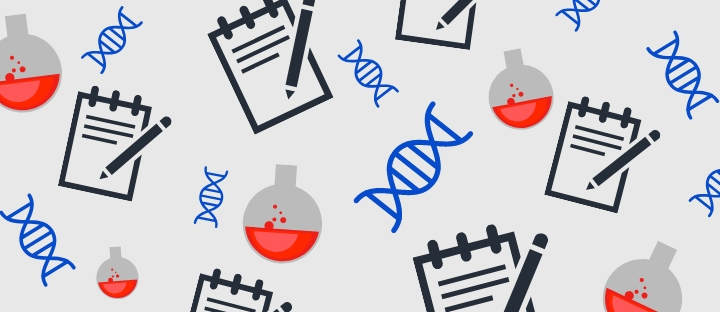#ScienceSaturday posts share exciting scientific developments and educational resources with the KAND community. Each week, Dr. Dylan Verden of KIF1A.ORG summarizes newly published KIF1A-related research and highlights progress in rare disease research and therapeutic development.
KIF1A-Related Research
F-box protein FBXB-65 regulates anterograde transport of UNC-104 through modification near the PH domain
KIF1A is an impressive protein, but while we often picture it as a lone motor hauling massive cargo, the reality is that many types of cargo are collaboratively transported by other motor proteins, or by multiple KIF1A motors. Cooperation between KIF1A motors can make transport more reliable, carry larger cargo, or adjust the cargo’s final destination. In this week’s pre-print*, researchers at the Tata Institute of Fundamental Research in Mumbai investigated how a modification to UNC-104, the C. elegans worm analogue of KIF1A, may influence the number of motors recruited to cargo.
Note: For simplicity I will use the term KIF1A when referring to UNC-104
Post-translational modifications:
When we talk about modifications to proteins, it’s usually in the context of mutations – a modification to the KIF1A gene makes altered RNA, which translates into altered KIF1A protein. But once a protein is made, it can still be regulated by making additions or modifications to its structure; these post-translational modifications could be useful tools for altering a protein’s behavior in a directed way, an approach closely related to structure-based therapeutics.
The Study
In this case, knocking down a protein called FBXB-65 caused KIF1A to accumulate at the axonal tips of neurons, indicating that more cargo may be transported along the axon. Tracking KIF1A in worms revealed that the loss of FBXB-65 caused KIF1A to move more in both forward and backward directions.
Notably, these changes weren’t due to increased KIF1A levels. The authors predicted that FBXB-65 was adding a post-translational modification to KIF1A that was impacting its behavior. Since we know the weight of KIF1A, weighing the protein can be a way to check for these modifications. By snipping KIF1A into smaller snippets, the researchers found an addition to the KIF1A protein near in a region called the PH domain, close to where KIF1A binds cargo.
Deleting the fbxb-65 gene, or deleting the area of KIF1A that FBXB-65 modifies, also caused KIF1A to move more sporadically and accumulate at axonal tips of neurons. Both of these methods caused transport profiles similar to overexpression of KIF1A, even though there wasn’t an increase in KIF1A levels; this indicates that FBXB-65 may regulate how much available KIF1A is recruited to the cargo surface.
Knocking out fbxb-65 in worms that already carry a KIF1A mutation also increased cargo transport, indicating that more KIF1A cooperation may offset the less effective movement of individual mutant motors. Modulators like this may give us the tools we need to fine-tune the dynamics of mutant KIF1A.
*What’s a pre-print? Check out this #ScienceSaturday post to learn more.
Rare Roundup
New Study Measures Economic Impact of Delayed Diagnosis of Rare Diseases
Rare disease diagnosis and treatment are an investment; that isn’t just a value statement about the value of health, it is a financial reality – so says a recent study from the EveryLife Foundation, which measured the economic impact of delayed diagnosis for 7 rare disorders. Delayed diagnosis had an estimated cost of between $86,000 and $517,000 per patient. This included direct medical costs as well as factors like caregiver productivity. Timely diagnosis allows families and clinicians to makes plans and accommodations that reduce sudden or unnecessary costs down the line. This is also important when newborns present as having a “common” disorder that may have a rare genetic component, like KIF1A in genetic cerebral palsy.

